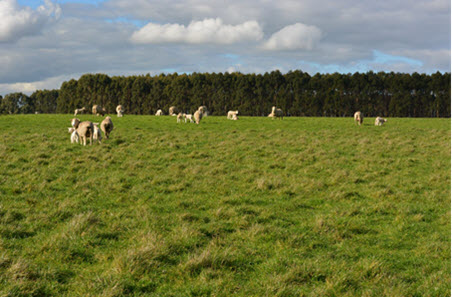Mixed results for lambing density research

A project examining the effect of mob size and stocking rate on twin-born lamb survival has proved and disproved some long-held theories.
Lifting lamb survival rates offers numerous benefits to Australia’s sheep industry, with improved animal welfare outcomes and on-farm productivity among them.
Limited previous research had suggested increasing the mob size or stocking rate of ewes at lambing may increase the risk of mismothering and lamb mortality.
The ‘Improving lamb survival by optimising lambing density’ project has so far found stocking rate has no effect on lamb survival, but smaller mob sizes improve the survival of twin-born lambs, regardless of breed.
Murdoch University PhD student Amy Lockwood has been managing the data under the supervision of project managers Lyndon Kubeil from Agriculture Victoria, Dr Serina Hancock from Murdoch University, and consultant Dr Jason Trompf.
Experiment design
“The research aims to test the hypothesis that the survival of twin-born lambs on commercial farms in southern Australia will be greater when ewes lamb in smaller mobs and at lower stocking rates,” Amy said.
“A total of 61 research sites were run on commercial farms across southern Australia during 2016 and 2017. Another nine sites will be completed this year.”
Adult twin-bearing Merino or non-Merino ewes were randomly allocated into one of four treatments on day 140 from joining: high (average 240 ewes) or low (average 100 ewes) mob size, and high (7–8 ewes/ha) or low (5–6 ewes/ha) stocking rate.
Feed on offer and ewe condition scores were assessed 140 days after joining and at lamb marking. The number of lambs at marking was recorded for each mob.
Data was also collected from a large network of producers to assess the effects of mob size and stocking rate at lambing on lamb survival, across a range of environmental and management conditions.
Mixed results
“So far we’ve found stocking rate doesn’t have any significant effect on twin-lamb survival,” Amy said.
“However, the survival of lambs born at the low mob size was 2.8% greater than those born at the high mob size, regardless of breed.
“This equated to a 2% decrease in lamb survival for each extra 100 twin-bearing ewes in the mob.”
Amy said the effect of mob size was consistent for twin-bearing ewes with a condition score of 2.6 to 3.5 at lambing.
“The key point is that pregnancy scanning and managing the nutritional requirements of single and twin-bearing ewes separately is priority number one,” she said.
“Once we have these key factors in place, we can then achieve an extra couple of percent improvement in survival by reducing mob size.
“After we’ve completed the additional research sites for the national project this year, we’ll do a full benefit–cost analysis of reducing mob size and develop practical guidelines for producers.”
Feed on offer plays a part
Further experimental work conducted by Amy as part of her PhD suggested the relationship between mob size and lamb survival may be influenced by feed on offer at lambing.
A higher mob size decreased the survival of twin-born lambs when feed on offer was below 400kg dry matter (DM)/ha at lambing and ewes were being supplementary fed.
However, another experiment found the survival of single and twin-born lambs was not influenced by mob size when feed on offer exceeded 2,700kg DM/ha at lambing.
“Although our national project didn’t find any relationship between mob size, feed on offer and lamb survival, these mixed results have prompted us to do further work to see if there’s a point at which feed on offer overrides the effect of mob size on lamb survival,” Amy said.
“Understanding any factors which influence the relationship between mob size and lamb survival will help us develop improved guidelines for producers.”
Information:
Amy Lockwood
T: 0429 976 483
Email Amy
For help with maximising lamb numbers go to Module 10 of Making More From Sheep: makingmorefromsheep.com.au/wean-more-lambs



